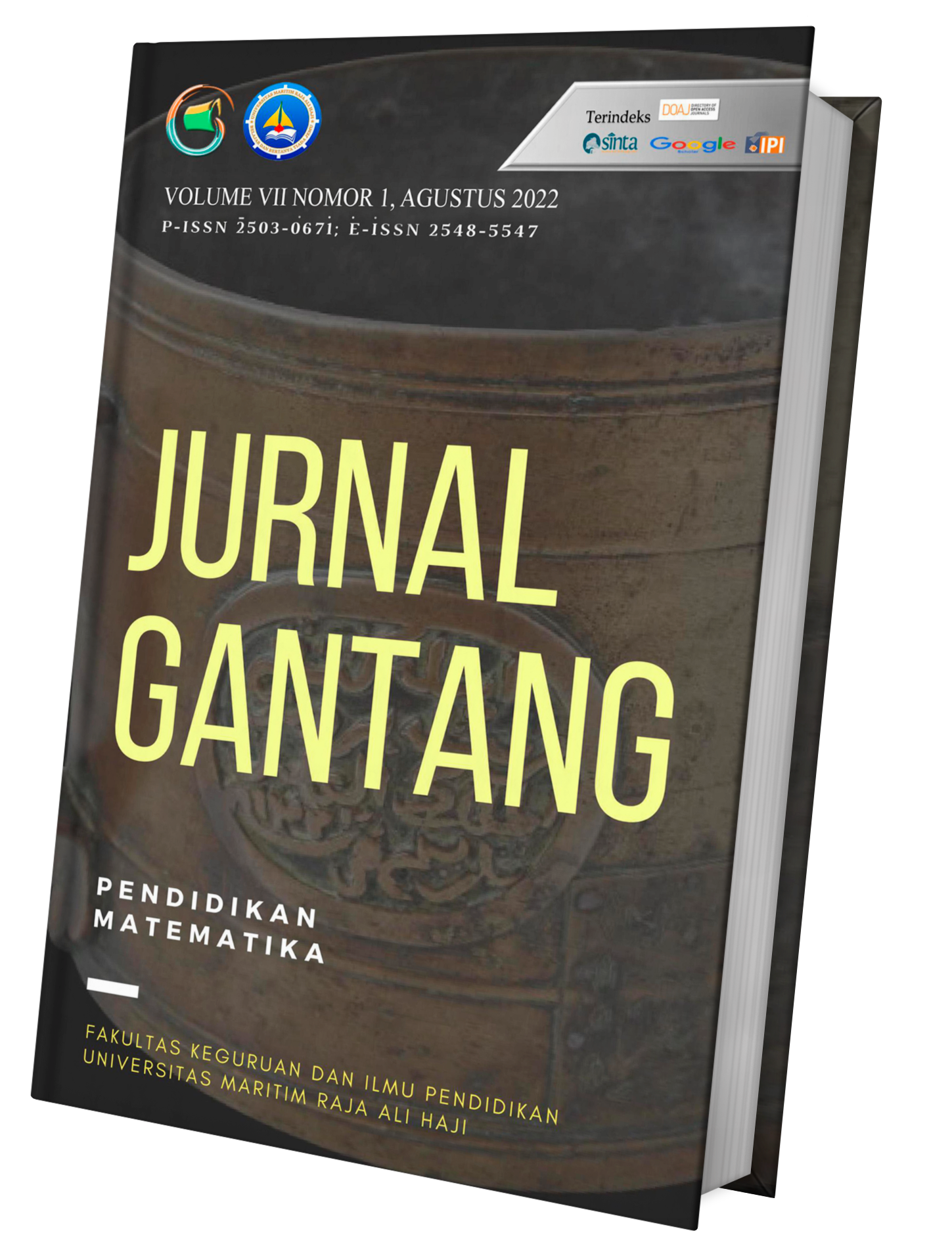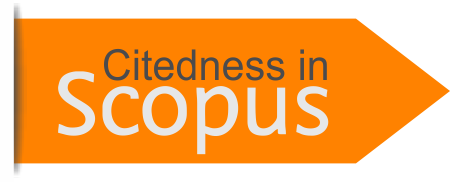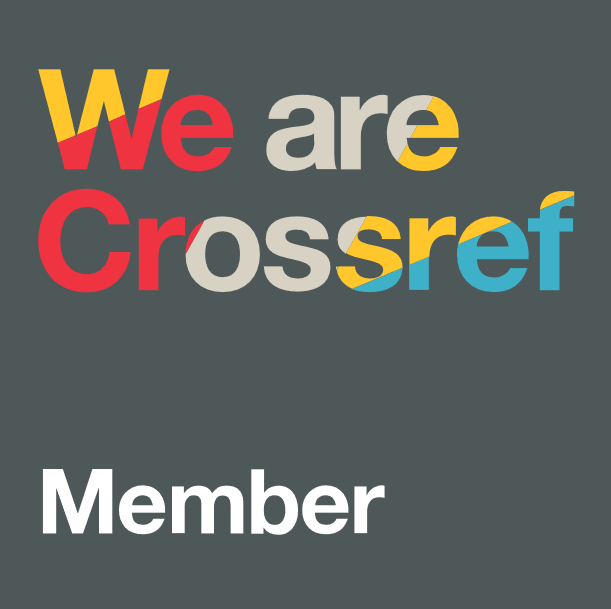The Eighth Graders' Higher Order Thinking Skills in Solving Numeracy Problems-Based Minimum Competency Assessment
DOI:
https://doi.org/10.31629/jg.v7i1.4470Keywords:
higher-order thinking skills, numeracy problems, a minimum competency assessmentAbstract
The Indonesian government makes efforts to improve students' higher-order thinking skills by implementing a Minimum Competency Assessment or Assessment Kompetensi Minimum (AKM) as a substitute for the National Examination. With the implementation of the AKM, it is necessary to find out how students can solve these questions. This research analyzed students' higher-order thinking skills in solving AKM-type math problems. The research method used is descriptive qualitative research consisting of 3 stages: the preparation stage, the implementation stage, and the data analysis stage. The research was conducted in the odd semester of the 2020/2021 academic year with the research subjects of eleven 8th grade students of SMP IT Raudhatul Ulum Sakatiga, South Sumatra, and SMPN 11 Banjarbaru, South Kalimantan. Data collection techniques used are tests, documentation, observation, and interviews. The data were analyzed qualitatively. The results showed that students with high abilities could solve several questions that required analytical power but were still weak in solving questions that required evaluation. Other students still need to improve their analytical and evaluation skills.
Downloads
References
Abdullah, A. H., Abidin, N. L. Z., & Ali, M. (2015). Analysis of students’ errors in solving Higher Order Thinking Skills (HOTS) problems for the topic of fraction. Asian Social Science, 11(21), 133–142. https://doi.org/10.5539/ass.v11n21p133
Anney, V. N. (2016). Journal of Education and Practice www.iiste.org ISSN (Vol. 7, Issue 9). Retrieved from https://www.iiste.org
Choridah, D. T. (2013). Peran pembelajaran berbasis masalah untuk meningkatkan kemampuan komunikasi dan berpikir kreatif serta disposisi matematis siswa SMA. InfinityJ Urnal Ilmiah Program Studi Matematika STKIP Siliwangi Bandung, 2(2), 194–202.
Davis, J. (2013). Student understandings of numeracy problems: Semantic alignment and analogical reasoning. Australian Mathematics Teacher, 69(2), 19–26.
de Lange, J. (2003). Mathematics for literacy. National Council on Education and the Disciplines, 75–89.
Devina, P., Suanto, E., & Kartini, K. (2021). Pengembangan perangkat pembelajaran berorientasi berpikir tingkat tinggi model problem based learning materi peluang kelas viii SMP. Jurnal Gantang, 6(1), 61–73. https://doi.org/10.31629/jg.v6i1.2867
Fatimah, S., Muhsetyo, G., & Rahardjo, S. (2019). proses berpikir tingkat tinggi siswa smp dalam menyelesaikan soal PISA dan scaffoldingnya. Jurnal Kajian Pembelajaran Matematika, 3(1), 24–33. Retrieved from http://journal2.um.ac.id/index.php/jkpm
Filho, W. L., Leal, W., Anabela, F. •, Azul, M., Brandli, L., Pinar, •, Özuyar, G., & Wall, T. (2020). Encyclopedia of the UN Sustainable Development Goals Series Editor: Quality Education. Springer. https://www.springer.com/series/15893
Fitria Alika, M., Darsono, T., Linuwih Jurusan Fisika, S., & Matematika dan Ilmu Pengetahuan Alam, F. (2018). Pengembangan soal model PISA untuk mengukur kemampuan berpikir tingkat tinggi siswa SMP pada materi pemanasan Global. UPEJ: Unnes Physics Education Journal 7(3). Retrieved from http://journal.unnes.ac.id/sju/index.php/upej
Gal, I., Grotlüschen, A., Tout, D., & Kaiser, G. (2020). Numeracy, adult education, and vulnerable adults: a critical view of a neglected field. ZDM - Mathematics Education, 52(3), 377–394. https://doi.org/10.1007/s11858-020-01155-9
Grifin, P., & Care, E. (2015). Assesment and teaching 21st century skils. Springer.
H Van Luit, J. E., & M Schopman, E. A. (2000). Improving early numeracy of young children with special educational needs. Remedial and Special Education, 21(1), 27–40.
Ilma Indra Putri, R., & Dolk, M. (2015). Professional development of pmri teachers for introducing social norms. Journal on Mathematics Education, 6(1), 11–19.
Kemendikbud. (2016). Peraturan Menteri Pendidikan dan Kebudayaan RI Nomor 20, Tahun 2016, tentang standar kompetensi lulusan pendidikan dasar dan menengah.
Krathwohl, D. R., & Anderson, L. W. (2010). Merlin C. Wittrock and the revision of bloom’s taxonomy. Educational Psychologist, 45(1), 64–65. https://doi.org/10.1080/00461520903433562
Kurniati, D., Harimukti, R., & Jamil, N. A. (2016). Kemampuan berpikir tingkat tinggi siswa SMP di Kabupaten Jember dalam menyelesaikan soal berstandar PISA. Jurnal Penelitian Dan Evaluasi Pendidikan, 20(2), 142–155. https://doi.org/ 10.21831/pep.v20i2.8058
Meryansumayeka, M., Zulkardi, Z., Ilma Indra Putri, R., & Hiltrimartin, C. (2021). Kesulitan siswa dalam menyelesaikan permasalahan geometri level higher order thinking skills. SJME (Supremum Journal of Mathematics Education), 5(2). https://doi.org/10.35706/sjme.v5i2.5162
Meryansumayeka, Putri, R. I. I., Zulkardi, & Hiltrimartin, C. (2020). Secondary students’ higher-order thinking skills in solving PISA- like mathematical tasks. Journal of Physics: Conference Series, 1480(1). https://doi.org/10.1088/1742-6596/1480/1/012034
Novita, R., & Hartono, Y. (2012). Exploring primary student’s problem-solving ability by doing tasks like PISA’s question. Journal on Mathematics Education, 3(2), 133–150.
OECD. (2019). PISA 2018 Assessment and Analytical Framework.
Oktiningrum, W., & Hartono, Y. (2016). Developing PISA-like mathematics task with indonesia natural and cultural heritage as context to assess students’ mathematical literacy. Journal on Mathematics Education, 7(1), 1–8.
Putri, R. I. I., & Zulkardi, Z. (2018). Higher-order thinking skill problem on data representation in primary school: A case study. Journal of Physics: Conference Series, 948(1). https://doi.org/10.1088/1742-6596/948/1/012056
Sellars, M. (2017). Numeracy in authentic contexts: Making meaning across the curriculum. Springer.
Stacey, K., Almuna, F., Caraballo, R. M., Lupiáñez, J. L., Rico, L., Chesné, J. F., Garfunkel, S., Gooya, Z., Kaur, B., Lindenskov, L., Park, K. M., Perl, H., Rafiepour, A., Salles, F., & Zulkardi, Z. (2015). PISA’s influence on thought and action in mathematics education. In Assessing Mathematical Literacy: The PISA Experience (pp. 275–306). Springer International Publishing. https://doi.org/10.1007/978-3-319-10121-7_15
Suhady, W., Roza, Y., & Maimunah, M. (2020). Pengembangan Soal untuk Mengukur Higher Order Thinking Skill (HOTS) Siswa. Jurnal Gantang, 5(2), 143–150. https://doi.org/10.31629/jg.v5i2.2518
Syahbana, A. (2012). Peningkatan kemampuan berpikir kritis matematis siswa SMP melalui pendekatan contextual teaching and learning. Edumatica Jurnal, 2(1), 45–57.
van Galen, F., & van Eerde, D. (2018). Mathematical investigations for primary schools. Utrecht University. Retrieved from http://www.fisme.science.uu.nl/en/impome/
Watson, A., & Ohtani, M. (2015). New ICMI Study series task design in mathematics education an ICMI study 22. Springer. Retrieved from http://www.mathunion.org/ICMI/
Westwood, P. S. (2004). Numeracy and learning difficulties: approaches to teaching and assessment. David Fulton.
Yustitia, V., Siswono, T. Y. E., & Abadi. (2021). Numeracy of prospective elementary school teachers: A case study. Journal of Physics: Conference Series, 1918(4). https://doi.org/10.1088/1742-6596/1918/4/042077


















